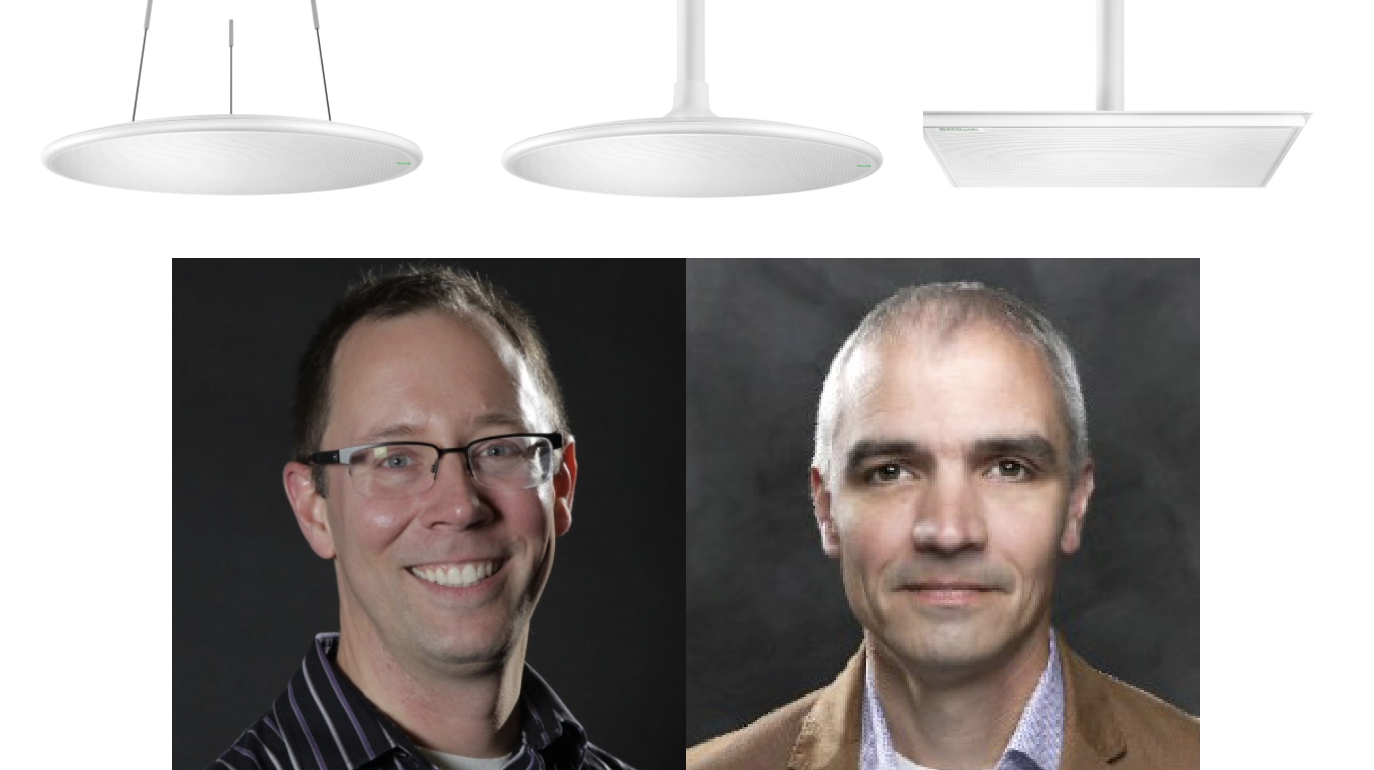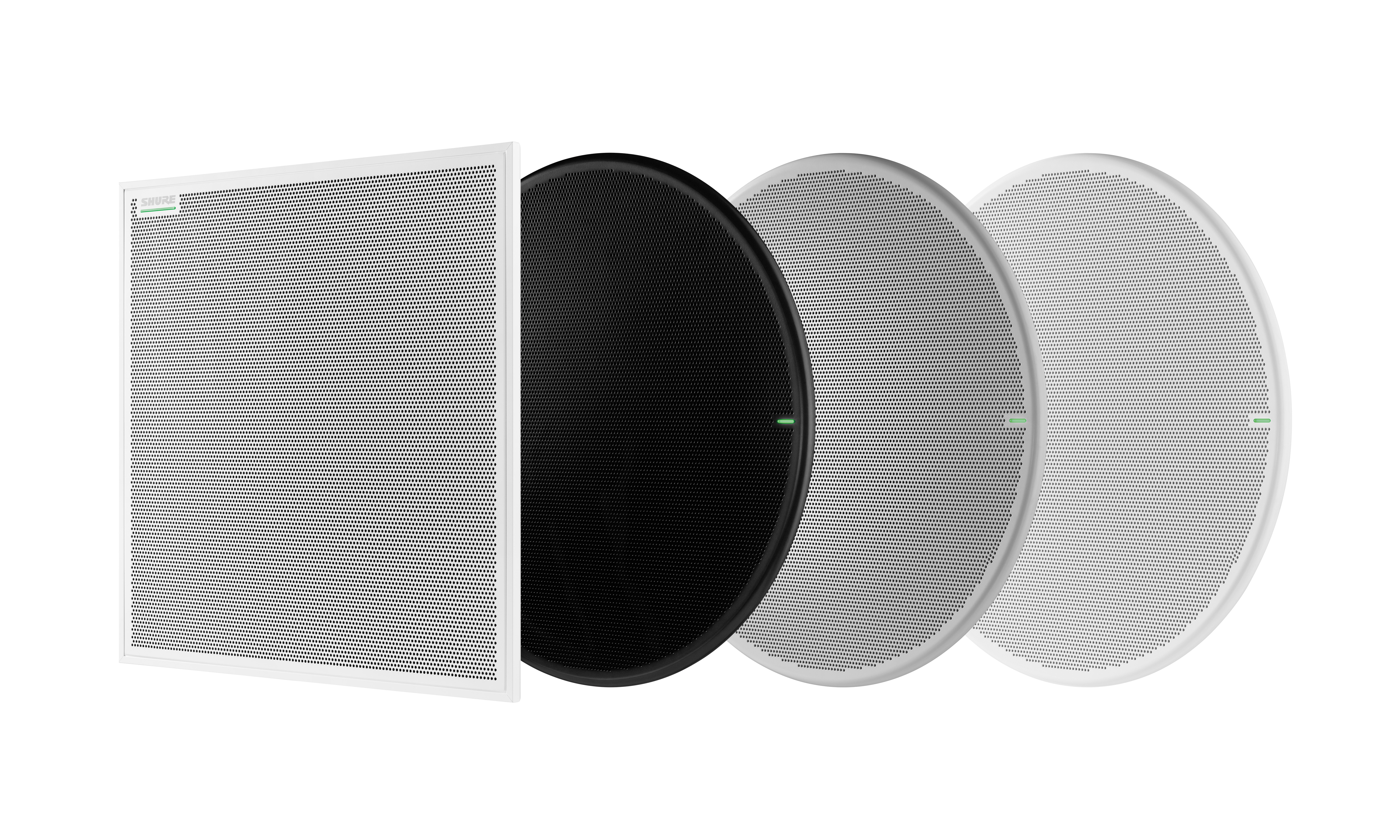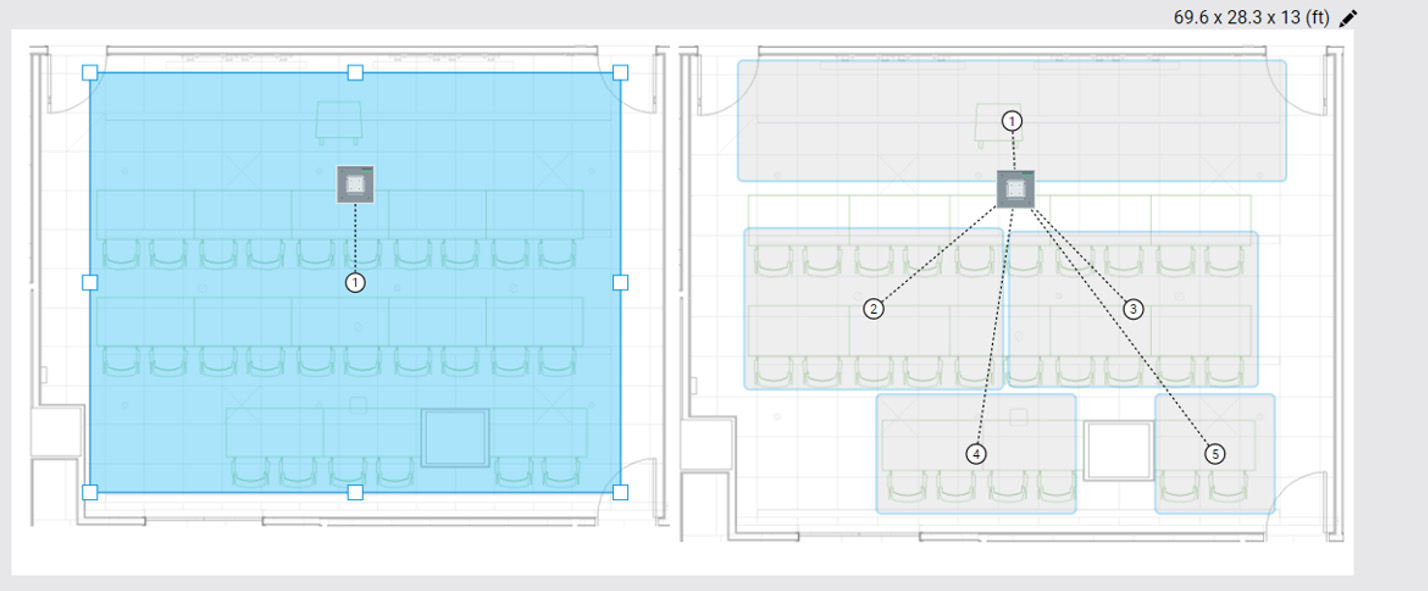Shure Discusses What's Behind Its New MXA920 Ceiling Array Microphone
Shure’s Doug Daube, director of Microphone Systems and Peter Herr, director of global marketing for the Systems Group discuss what's behind its new flagship ceiling array microphone delivers automatic coverage technology and next generation array architecture for streamlined setup and enhanced voice quality.

In a pre-announcement interview, AV Technology’s Cindy Davis sat down with Peter Herr, Shure’s director of global marketing for the Systems Group, and Doug Daube, director of Microphone Systems to learn about the use cases and benefits of its new flagship, the MXA920 ceiling array microphone.
Audio Creates Equity in the Hybrid Environment

With the dramatic increase in remote conferencing during the past two years, by now nearly everyone has experienced the downside of poor audio quality and a lack of coverage. Once considered a “nice to have,” a high-quality audio experience has become a “must have.” Hybrid meeting spaces and classrooms are being built out with microphones to ensure intelligibility, and voice tracking cameras are becoming more commonplace to create an engaging and immersive experience.
One of the biggest features includes something we're calling Automatic Coverage Technology, which is the next evolution of the steerable coverage technology” —Peter Herr, Shure’s director of global marketing for the Systems Group
It has been six years since Shure announced its MXA910 ceiling array microphone, and with significant technology upgrades, the MXA920 will be a direct replacement. Herr noted that at the core of the 920, “we're focusing on enhanced scalability and the ability to tackle more applications from AV conferencing to camera tracking performance, voice lift applications, and even sound reinforcement opportunities.” One MXA920 is optimized for up to a 30- by 30-foot seating area, which will cover meeting spaces of all shapes and sizes. “One of the biggest features includes something we're calling Automatic Coverage Technology, which is the next evolution of the steerable coverage technology,” Herr said. The technology is geared toward streamlining deployment and requiring minimal setup time to get the microphone up and running.
“We also took a few passes at the array technology that's built into the 920 and improved the overall sound signature from a voice capture standpoint for more natural speech,” Herr noted. “It's definitely noticeable.” Additionally, the 920 is offered in a round form factor, creating more choices for different architectural needs.

Simple Setup Right Out of the Box
Using the built-in web interface, Doug Daube illustrated how the Automatic Coverage Technology makes setup in a 30x30 coverage area super easy. All in integrator would need to do is drag and drop the microphone in the center of the space. “If I like the sound signature, and most people do out of the box, I'm done,” he said. “In the prior generation, I would've had ‘lobes’ to aim and stretch and try to get the area I could accomplish the same thing. Now, it’s basically done out of the box.”
Fine-tuning is equally easy. Daube added, “I can start to do some more sophisticated things, like have one coverage area for all the participants, and a different coverage area just for the podium.” And an active coverage area will attenuate when it hears sound. “But if I am worried about people talking at the doorway, I can exclude that area with additional suppression and set it [to] mute. I'm making the array listen to those areas, but if they hear sound from them, they're going to mute. It also disables the active lobes.”
“From the user standpoint, it's really easy,” he said. “If I want that area just to cover the podium, I can get down to a six-by-six dedicated area.” There’s the option of adding dedicated areas or dynamic areas. Dynamic areas would be used in a classroom application. “It doesn't mean that there's a mic always on, but when someone is speaking there is coverage in that area.” The dynamic option is particularly useful for hybrid and distance learning classes where remote students need to hear and engage with students in the classroom.
A daily selection of features, industry news, and analysis for AV/IT professionals. Sign up below.

Upping the Ante for Hybrid
With the 920, we're down to the granularity of the exact X, Y, Z coordinates of the person talking."—Doug Daube, director of Microphone Systems at Shure
When listening to audio from a remote location, speech intelligibility is, of course, imperative. With the next-generation array architecture with enhanced directional pickup used in the new MXA920, speech sounds more natural. “It’s a noticeable difference,” Daube pointed out. “Compared to a lot of other mics I might say, ‘Hey, you know, it kind of sounds like Rob,’ but with this generation you actually know it is Rob because it sounds exactly like him.” That level of quality is enabled by the directionality in the low-end frequency. “By being more directional, you end up hearing less of the room.” The onboard IntelliMix DSP applies automatic mixing, echo cancellation, noise reduction—and automatic gain control even takes it a step further. “If you have a room that has HVAC noise, just implementing the noise reduction feature will clean it up considerably,” Daube noted.” Cleaner audio dramatically helps reduce fatigue for the remote listeners. “If they're on an all-day training in that room, they'll really appreciate having a clean sound that they don't have to work to hear over a steady noise.”
During the past two years, video has become more widely used and embraced by almost everyone. As we enter this new era of the hybrid workplace and classroom, auto-tracking PTZ cameras are being adopted.
There have been significant advances in how the MXA920 works with auto-tracking cameras. “The prior generation provided information from the camera such as the center point of the lobe that was activated,” Daube explained. “With the 920, we're down to the granularity of the exact X, Y, Z coordinates of the person talking. And in addition, other data is used, such as which coverage area they're in and what the center of that coverage area [is]. Shure is working with several camera manufacturers to enable use of the data. “Each of them is working on optimizing their algorithms to make camera tracking as smooth as possible.”
AV Over IP
As it has in the past, Shure puts an emphasis on connectivity. “Flexible networking is key here,” Daube added. “The way we do it is through a single cable—power, control, and Dante or AES67—depending on which you are using.” Audio, PoE power, and control signals connect via Dante/AES67 digital audio networking over a single cable. Shure Audio Encryption keeps meeting content secure between the MXA920 and other Microflex ecosystem devices in the room. The MXA920 is certified for use with Microsoft Teams and is compatible with popular collaboration tools.
Form Factors
With the MXA920, Shure has introduced square and round form factors meet the architectural needs of today’s meeting spaces. White, black, and aluminum finishes are available to complement the interior design requirements of any office, and all are paintable for custom needs. “There are quite a few options for architects and interior designers to consider,” Daube added. “I've seen plenty of rooms that have a huge, six foot I beam in the middle, and you can't put a mic there. With new mounting options you can put the microphone to one side or the other and steer the coverage where you need to.”
The New Flagship
“The 910 has become a bellwether—an industry standard which we are obviously very proud of—but time marches on,” Herr said. “We are proud to announce the next generation with the MXA920 and elevate what was already premium sound,” he concluded.

Cindy Davis is the brand and content director of AV Technology (AVT). She was a critical member of the AVT editorial team when the title won the “Best Media Brand” laurel in the 2018 SIIA Jesse H. Neal Awards. Davis moderates several monthly AV/IT roundtables and enjoys facilitating and engaging in deeper conversations about the complex topics shaping the ever-evolving AV/IT industry. She explores the ethos of collaboration, hybrid workplaces, experiential spaces, and artificial intelligence to share with readers. Previously, she developed the TechDecisions brand of content sites for EH Publishing, named one of the “10 Great Business Media Websites” by B2B Media Business magazine. For more than 25 years, Davis has developed and delivered multiplatform content for AV/IT B2B and consumer electronics B2C publications, associations, and companies. A lifelong New Englander, Davis makes time for coastal hikes with her husband, Gary, and their Vizsla rescue, Dixie, sailing on one of Gloucester’s great schooners and sampling local IPAs. Connect with her on LinkedIn.
